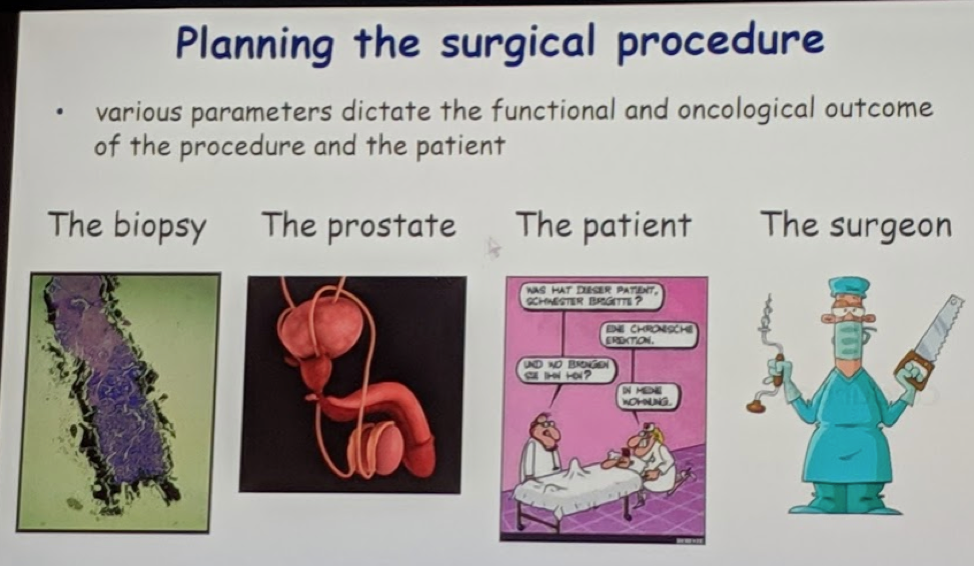To that effect, there are 4 aspects to surgical planning that can affect the outcomes:

- Biopsy
- Report each biopsy and biopsy core separately with its location à separate collection of each core
- Correlate presence of PCa, % area involved with cancer, length of cancer, number of positive cores with cancer volume, surgical margins, pT stage
- Use these together with nomograms to predict lymph node involvement, pT3b disease, and risk of radiation failure
- Information on an extracapsular extension, lymphovascular invasion, and perineural invasion should be reported
- Prostate
- Assess prostate volume – may impact surgical outcomes and functional recovery
- The shape of the prostate and intrapelvic location for the planning of how to deal with an apex
- Membranous length of the urethra – ensure adequate length without sacrificing apical tissue
- mpMRI imaging for local staging – may affect the aggressiveness of nerve spare, however, was not associated with positive surgical margin rates at the time of RP
- The Patient
- Comorbidities – Charlson comorbidity index, ASA
- Often underappreciated
- Has a significant impact on overall survival following RP but not disease-specific survival
- CCI score >= 3 patients have a 4.42x chance of overall mortality compared to CCI 0 patients. Very significant.
- Body mass index associated with prostate cancer-specific mortality and RP outcomes in multiple studies
- Estimate life expectancy – no surgery if life expectancy < 10 years
- Surgery of the lower urinary tract (prior TURP, TVP, UI)
- Prior intra-abdominal surgeries – may affect the decision to proceed robotically or open, or at the very least, increase risk of conversion to open surgery
- Erectile function at baseline
- Continence and bladder function at baseline
- Comorbidities – Charlson comorbidity index, ASA
- The Surgeon
- Every surgeon must look at his/her own outcomes – international series do not reflect an individual surgeon’s tendencies. Self-evaluation is key for improvement.
- Modular training programs and continuous reflection on your own cases can help mitigate negative outcomes – positive surgical margins, incontinence, ED
Presented by: Axel Heidenreich, MD, Professor, University Hospital Aachen, Department of Urology, Cologne, Germany
Written by: Thenappan Chandrasekar, MD. Clinical Instructor, Thomas Jefferson University, Twitter: @tchandra_uromd, @TjuUrology, at the 16th Meeting of the European Section of Oncological Urology, #ESOU19, January 18-20, 2019, Prague, Czech Republic


